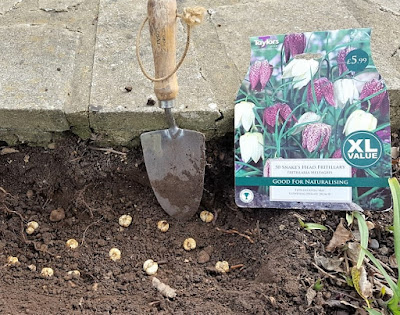 |
| Ornamental flowering plants for autumn colour |
For many gardeners, autumn is the time for preparing the garden for winter. The lawn has stopped growing (hopefully), the leaves are turning on the trees and there is a crisp bite in the air that suggests you go back indoors and make a cup of tea.
However, as the nights are drawing in and most plants species are in the process of dropping their seeds, there is no reason why the garden should remain a landscape of green. Chose wisely and even in November you can still have a riot of colourful blooms - at least until the first hard frost! Incidentally, the majority of the autumn flowering plants are from the Americas.
So to save hours of research, check out my top ornamental flowering plants for autumn colour.
Rudbeckia species and cultivars
 |
| Rudbeckia hirta 'Cherry Brandy' |
As one of my favourite autumn perennials, the genus Rudbeckia gets the top spot. Commonly known as coneflowers or black-eyed-susans, all species are native to North America. All species are herbaceous and mostly perennial plants (although some are annual or biennial) growing to between 0.5–3 m tall.
Arguable the most ornamental are cultivars of Rudbeckia hirta. 'Cherry Brandy' is a particularly attractive example, although it is not fully hardy and will need protection from frosts in cold areas. However cultivars of Rudbeckia fulgida also worth considering
Helenium species and cultivars
 |
| Helenium 'Summer Circle' |
Closely related to the genus Rudbeckia, Helenium is a genus of annuals and deciduous herbaceous perennials native to the Americas. They may be upright, clump-forming annuals, biennials or herbaceous perennials with simple leaves and showy daisy-like flower-heads which flower over a long period.
Helenium 'Moerheim Beauty' is a particular favourite as is the cultivar 'Summer Circle'.
Grow in any fertile, moist but well-drained soil in full sun. Provide support for best results and cut down dead stems in november. Divide and replant every few years to improve flowering.
Verbena bonariensis

Native to tropical South America, Verbena bonariensis is a tall and slender-stemmed perennial. It bears sparse, oblong leaves and large branched clusters of small, purple flowers.
Growing to approximately 120 cm tall, it will grow well in a moist but well-drained or well-drained, moderately fertile soil in full sun. In cold areas, protect with a dry winter mulch
Cut down stems in the spring as new growth emerges from the base. The spent flowers can be deadheaded in the autumn if seed is not required
Anemone hupehensis
Commonly known as the Japanese anemone, Anemone hupehensis is flowering herbaceous perennials and a native to central China. The Japanese common name is due to it being naturalised in Japan for centuries.
It has an erect habit, growing to a height of approximately 75 cm. It will be happy growing in any garden soil but avoid excessive winter wet.
Be aware that Anemone hupehensis can spread rapidly once established and can be difficult to eradicate
Nerine bowdenii
 |
| Nerine bowdenii |
God bless Nerine bowdenii, as they are the brightest show of any plants at this time of year. Commonly known as the 'Guernsey lily', it is a hardy, herbaceous, bulbous perennial native to the mountainsides of South Africa.
Nerine bowdenii is the most commonly found species available to purchase, but that is because it is the hardiest and most reliable.
In colder areas it can be overwintered using the protection of a dry mulch such as bracken or straw, or grit. Just make sure that the mulch does not become too wet which can cause the bulbs to rot.
Sedum spectabile cultivars
 |
| Sedum spectabile 'Purple Emperor' |
Sedum spectabile is already a popular drought-tolerant garden plant noted for its ornamental succulent leaves and 'butterfly-attracting nectar rich blooms. Now while not as popular with beneficial insects the cultivars, Sedum 'Brilliant' has a far richer flower colour, while the cultivars 'Purple Emperor', 'Matrona' and 'Jose aubergine' also display stunning foliage colour.
Grow Sedum spectabile cultivars in any moderately fertile, but well-drained, neutral to slightly alkaline soil. It will need a position that receives full sun to promote flowering and encourage a compact habit.
Salvias
 |
| Salvia guaranitica 'Black and Blue' |
The genus Salvia contains approximately 1000 species, but it is the late summer to autumn flowering species from Central and South America that are of most interest for the purposes of this article. Perennial species and cultivars such as Salvia elegans, Salvia microphylla 'Hot Lips', Salvia patens and Salvia guaranitica 'Black and Blue' are a particular favourite, but can be tender in regions with experience freezing, wet conditions.
Ornamental Salvias are best grown in full sun in well-drained soil with shelter from cold winds.
For related articles click onto the following links:
HOW TO GROW RUDBECKIA FROM SEED
HOW TO GROW SEDUM FROM CUTTINGS
ORNAMENTAL FLOWERING PLANTS FOR AUTUMN COLOUR
































